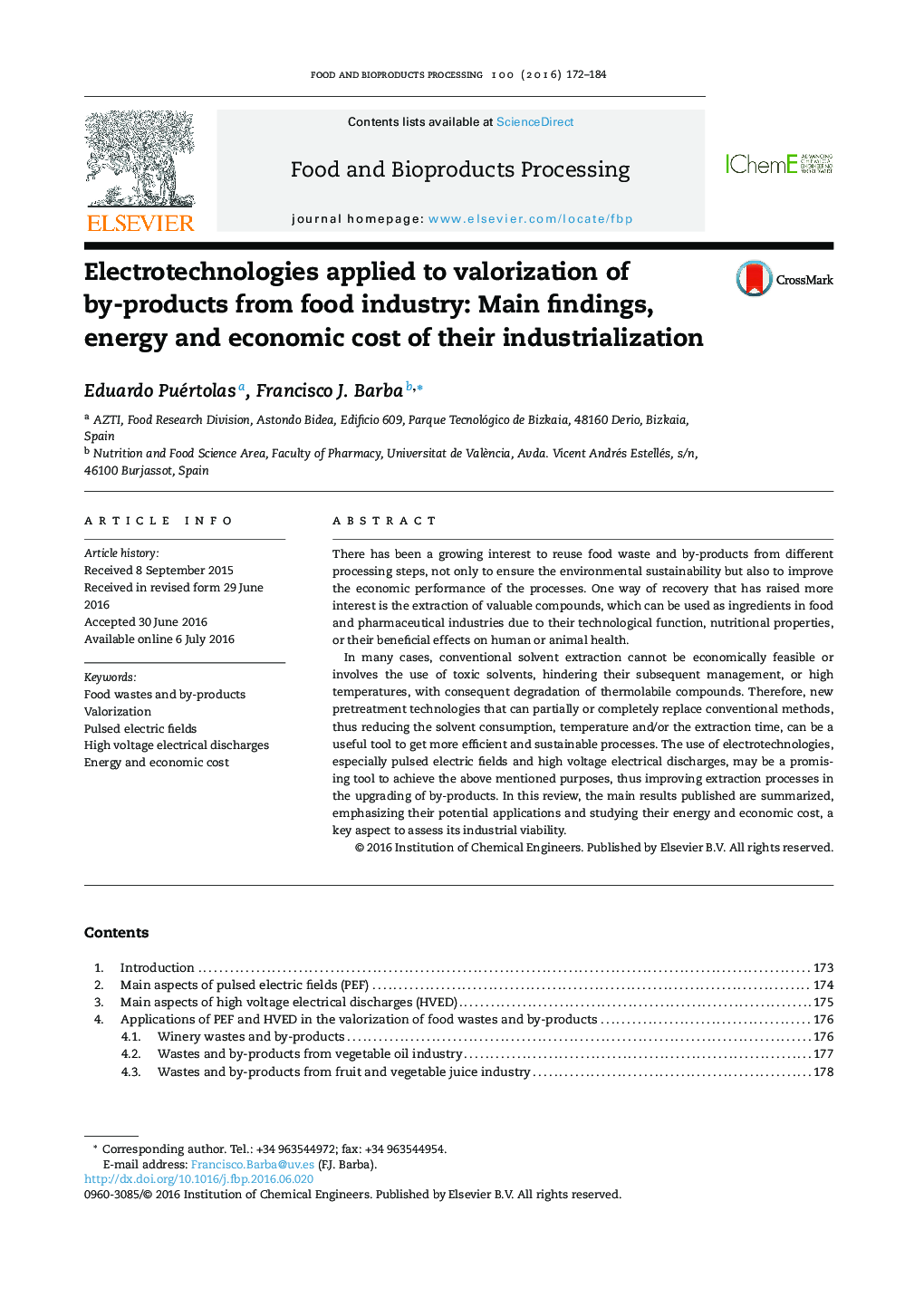| کد مقاله | کد نشریه | سال انتشار | مقاله انگلیسی | نسخه تمام متن |
|---|---|---|---|---|
| 6451719 | 1361374 | 2016 | 13 صفحه PDF | دانلود رایگان |
- Electrotechnologies potential to valorizate food by-products was reviewed.
- PEF allows selective extraction, minimizing subsequent purification steps.
- Energetic cost of PEF and HVED treatments differs according to food by-products.
- HVED may be a suitable tool for extracting compounds from lignified hard materials.
- PEF is energetic-economically feasible to improve extraction from soft tissues.
There has been a growing interest to reuse food waste and by-products from different processing steps, not only to ensure the environmental sustainability but also to improve the economic performance of the processes. One way of recovery that has raised more interest is the extraction of valuable compounds, which can be used as ingredients in food and pharmaceutical industries due to their technological function, nutritional properties, or their beneficial effects on human or animal health.In many cases, conventional solvent extraction cannot be economically feasible or involves the use of toxic solvents, hindering their subsequent management, or high temperatures, with consequent degradation of thermolabile compounds. Therefore, new pretreatment technologies that can partially or completely replace conventional methods, thus reducing the solvent consumption, temperature and/or the extraction time, can be a useful tool to get more efficient and sustainable processes. The use of electrotechnologies, especially pulsed electric fields and high voltage electrical discharges, may be a promising tool to achieve the above mentioned purposes, thus improving extraction processes in the upgrading of by-products. In this review, the main results published are summarized, emphasizing their potential applications and studying their energy and economic cost, a key aspect to assess its industrial viability.
Journal: Food and Bioproducts Processing - Volume 100, Part A, October 2016, Pages 172-184
